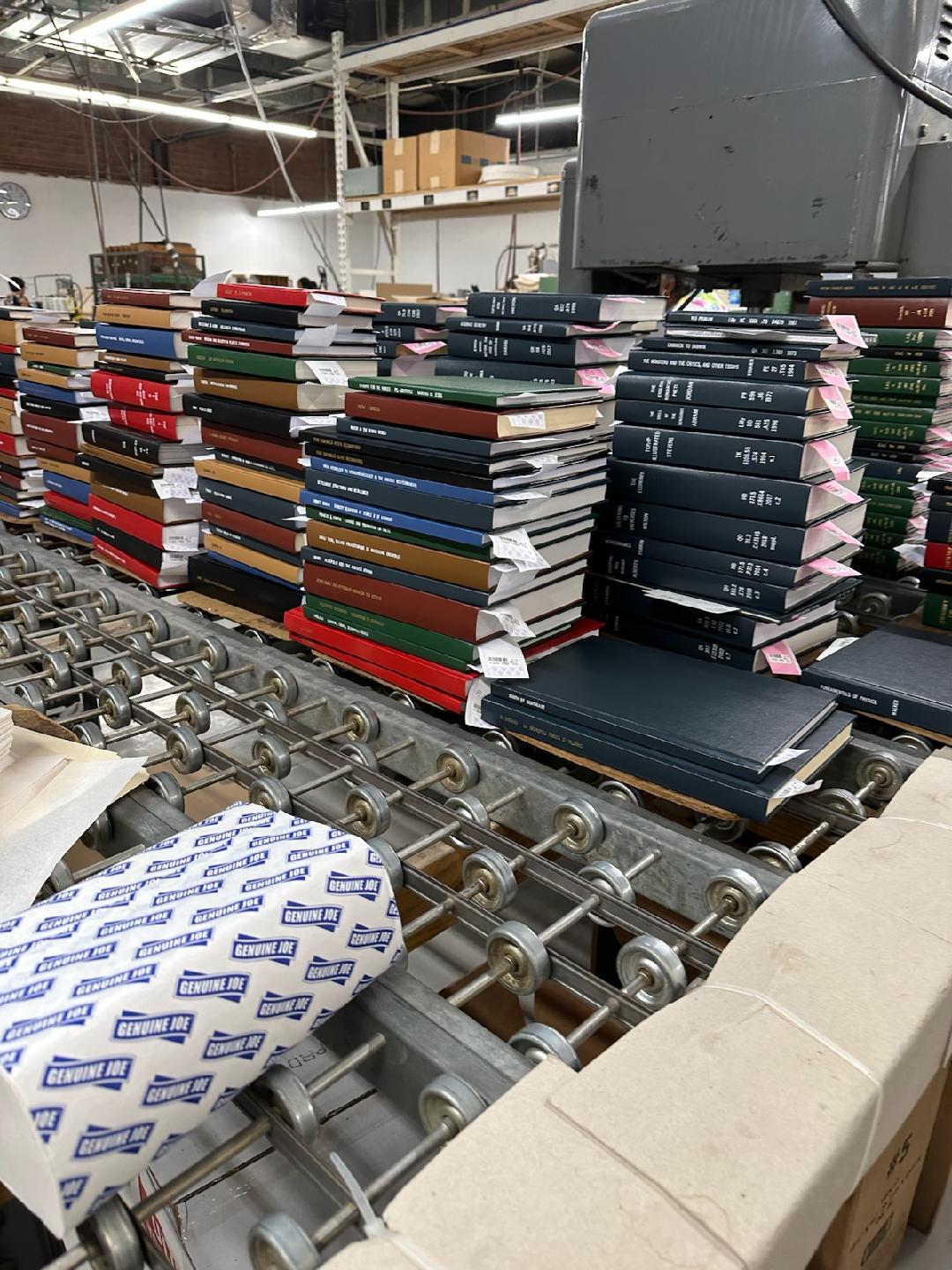 1. How long has DUL been sending materials out to the Commercial Bindery (CB)? Since everyone who knew the history of binding at Duke University Libraries (DUL) has retired, we had to do a little research to find this answer. (Thanks to Rebecca Pattillo for finding this information in the University Archives files!) According to the DUL Newsletter, v.5 no.2, published January 1958, DUL allotted a budget for binding as early as 1953. The first mention of sending periodicals to the bindery was in 1957. The Newsletter does not specify a binding company name but I have seen the stamp “Southern Bound” inside the back cover of books from the 1960s. Evidently DUL sent some books to the Southern Library Bindery in Nashville, TN. Some other materials were sent to Marking & Repair for in-house binding. The Newsletter also cited sending monographs to the Joseph Ruzicka Bookbinding Company in 1985. My former supervisor told me DUL sent books to Heckman in 1986 for a short period of time. They returned to Ruzicka in 1987. The company has changed names three times since then, with the current name being The HF Group. We have trusted our books and other materials in their care since 1987.
1. How long has DUL been sending materials out to the Commercial Bindery (CB)? Since everyone who knew the history of binding at Duke University Libraries (DUL) has retired, we had to do a little research to find this answer. (Thanks to Rebecca Pattillo for finding this information in the University Archives files!) According to the DUL Newsletter, v.5 no.2, published January 1958, DUL allotted a budget for binding as early as 1953. The first mention of sending periodicals to the bindery was in 1957. The Newsletter does not specify a binding company name but I have seen the stamp “Southern Bound” inside the back cover of books from the 1960s. Evidently DUL sent some books to the Southern Library Bindery in Nashville, TN. Some other materials were sent to Marking & Repair for in-house binding. The Newsletter also cited sending monographs to the Joseph Ruzicka Bookbinding Company in 1985. My former supervisor told me DUL sent books to Heckman in 1986 for a short period of time. They returned to Ruzicka in 1987. The company has changed names three times since then, with the current name being The HF Group. We have trusted our books and other materials in their care since 1987.
2. Is the Bindery and Monograph Maintenance (BAMM) Section on a timeline for preparing materials for bindery? The Commercial Binding Unit, now called Bindery & Monograph Maintenance (BAMM), is no stranger to meeting strict deadlines. We used to send out materials every two weeks. Since binding has decreased significantly in the last fifteen years, the CB set up a four-week turnaround time. One student worker will be reviewing the returned shipment while the other two students are preparing materials for the next shipment.
3. How can you tell if a DUL resource needs to go to the bindery? When covers are torn or pages are falling out, materials need to be commercially bound. Occasionally materials are water damaged or new materials are accidentally sliced during the box opening process. Sometimes accompanying materials such as posters or maps that are the same size or larger than the book, need a pocket. These are all examples but not an exhaustive list of items that need to go to the CB.
4. What’s the size of an average bindery shipment, and what kinds of DUL materials are in each shipment? The size of a bindery shipment varies from 200 to 400 items. It depends on several factors: backlogs in Collections Services, special projects like renovations where materials are moving and being reviewed, how many physical books are being used by patrons and being returned, water damaged materials, and new materials that meet certain size criteria set up as guidelines within the Resource Description Department.
5. What happens to a book to get it ready for the bindery? What happens to that book at the bindery? Conservation Services staff pick up materials from Access & Delivery Services and refer them to BAMM at Smith Warehouse. They get separated onto trucks according to types of material—paperbacks, hardbacks, sets, and serials, which are processed on different lots in ABLE. Students or staff print new labels, assign new barcodes if needed, and add internal notes in Aleph, if needed. We also bind some new materials—monographs, periodicals, and music scores that are going to the stacks.
When our materials are received at the Commercial Bindery, they go to the check in department first where they create the shop work order according to our shipping record paper work. They run duplicate code stickers which go on the binding tickets and in the back of the books to match the covers to the books. They unpack and separate the books, periodicals, digicovers, music scores, etc. They adhere the stickers and send the books down the assembly line.

Then the collator checks for trim margins and decides if they should be adhesive bound or sewn. The books get measured and that information is sent to the lettering department. They pull in our lots from ABLE, stamp the covers, and send them to page attachment. After that the books are trimmed and the boards are cut. The covers are matched with the books and they travel to the “casing in” department where the covers are glued to the boards. The books are placed in the covers and sent to the press. The final stop is inspection. The shipping department counts the books and adds any extra charges as needed. Then the books are boxed and returned to DUL.
6. How long does it take an item to go through the bindery process, from beginning to end? Depending on when we receive books and periodicals, some materials will be added to ABLE within one week, while others will be added up to 4 weeks ahead of time. Usually we unpack, review, and send the returned books out within a week
7. DUL materials come back from the bindery in different solid-colored covers. Is there a reason for each color? Do the cover colors ever change? Periodicals are assigned a cover color when they are set up in ABLE. Ideally that cover color will always be the same so they will match in the stacks. Formerly we chose from a list of 24 colors. Since library binding cover materials are in short supply, we now have 8 colors to choose from—black, brown, dark green, maroon, navy, red, royal blue, and tan. Monograph cover colors are pulled randomly at the CB. We only assign a cover color for sets—navy blue—so we don’t have to check the stacks for the previous color. The Music Library also requested blue covers for the Miniature Scores collection and the pocketbooks which house scores and parts.

8. What’s the most interesting DUL resource that you’ve sent to the bindery? I have seen many interesting books come through for rebinding. Atlases amaze me just because of their size, and the world maps are very colorful and informative. Some Government Documents are intriguing. But the one book that stands out in my mind that came through recently for binding was “Afro-Atlantic Histories”. I chose to send this book for a Digicover, where the original covers are digitized, mounted on boards, and bound with a clear cover. You can see by the photo this book cover is stunning. Also, the foredge was a rainbow of primary and secondary color plate sections surrounding the text and art work. If you would like to see this book, it is displayed at Lilly’s Art Exhibition Catalog Collection. You can also find more information on the National Gallery of Art webpage
9. Does Conservation play into the bindery workflow? If so, how? Most people don’t know that we also have a brittle books workflow. Conservation Services staff also refer books to BAMM for boxing. These books are too brittle for rebinding. We box them to extend their shelf life for patrons’ use for many more years. We enter the title, author, call number, and measurements in Excel, and send the spread sheet to The HF Group Indiana office. The books remain on the shelves at Smith. It saves wear and tear on the books, and we don’t have to worry about them getting lost during shipping. The HF Group staff member makes the KASEBoxes, acid free clam shell boxes (similar to pizza boxes) that protect materials, and ships them directly to Smith. Student workers match up the books by the item number printed on the box with the corresponding book on the shelf. They are double-checked by title and call number. Then they glue a brittle book label inside each KASEBox to inform the patron how to handle the brittle materials. The Item Process Status (IPS) is changed if needed, and the boxes are sent out to the owning library or DUL’s offsite storage facility.


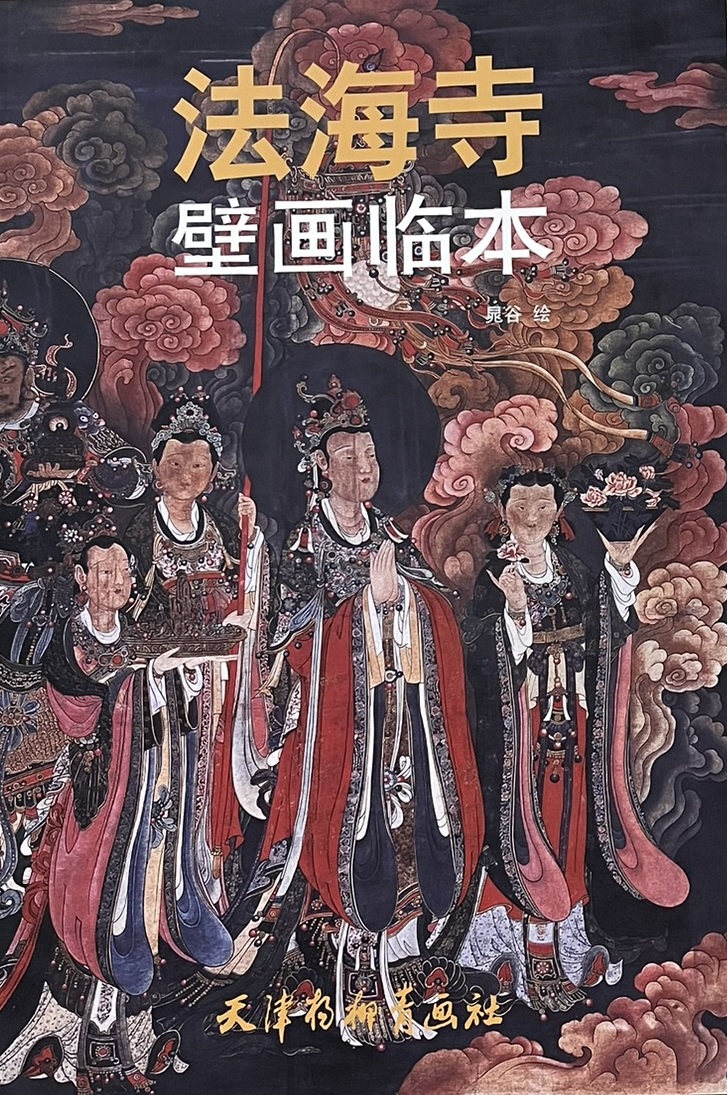

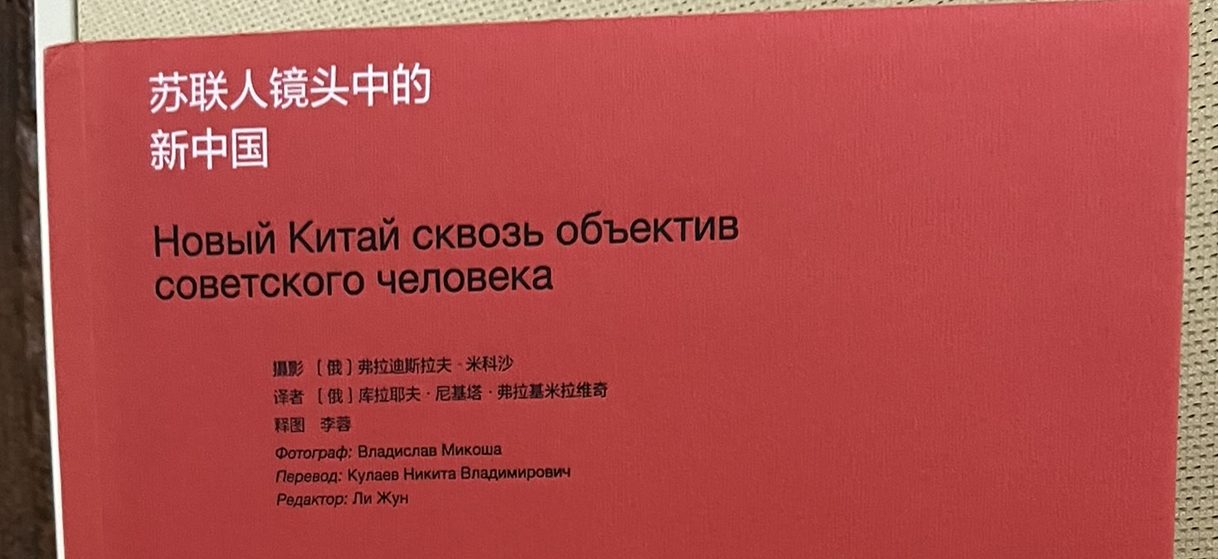

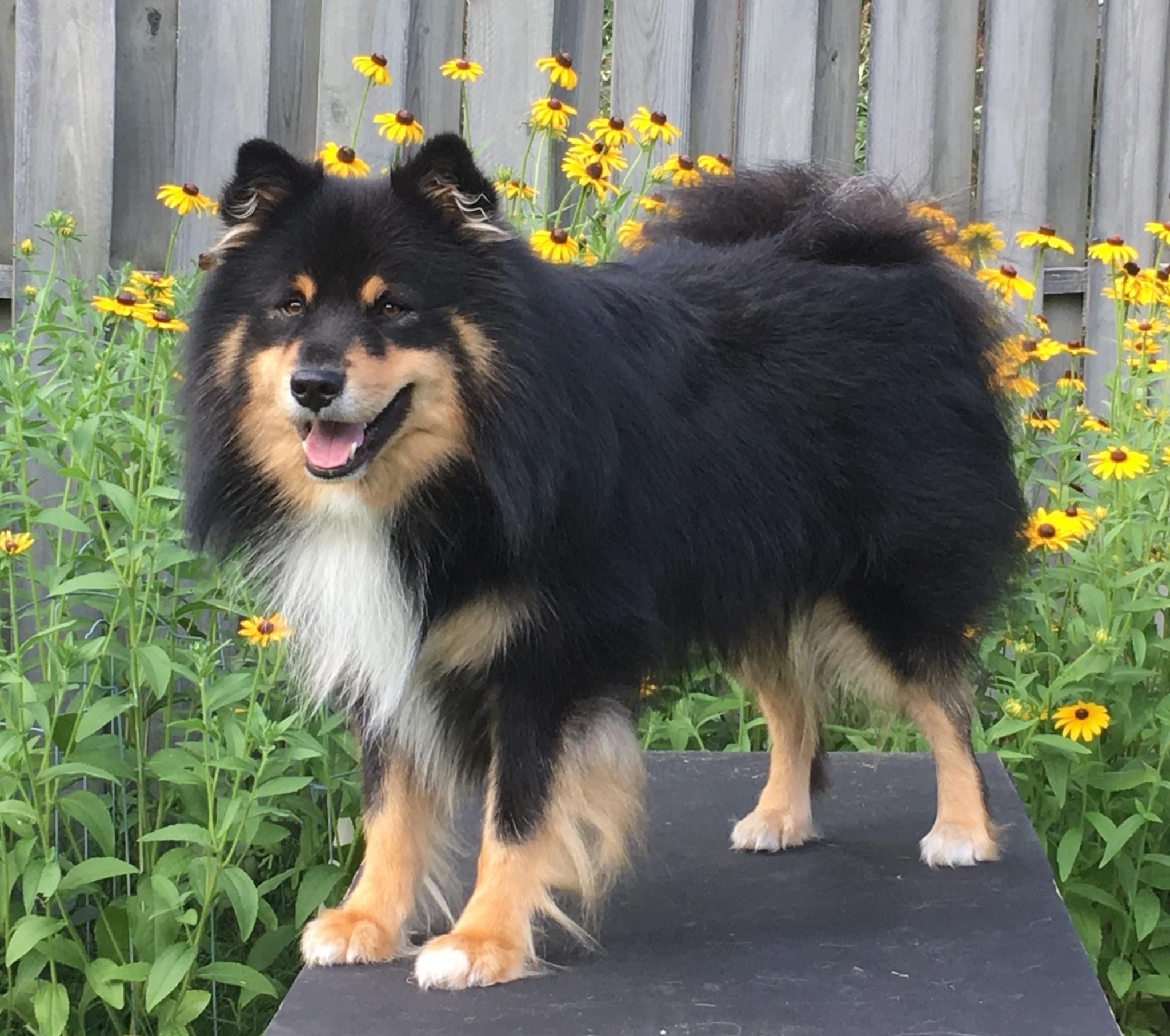



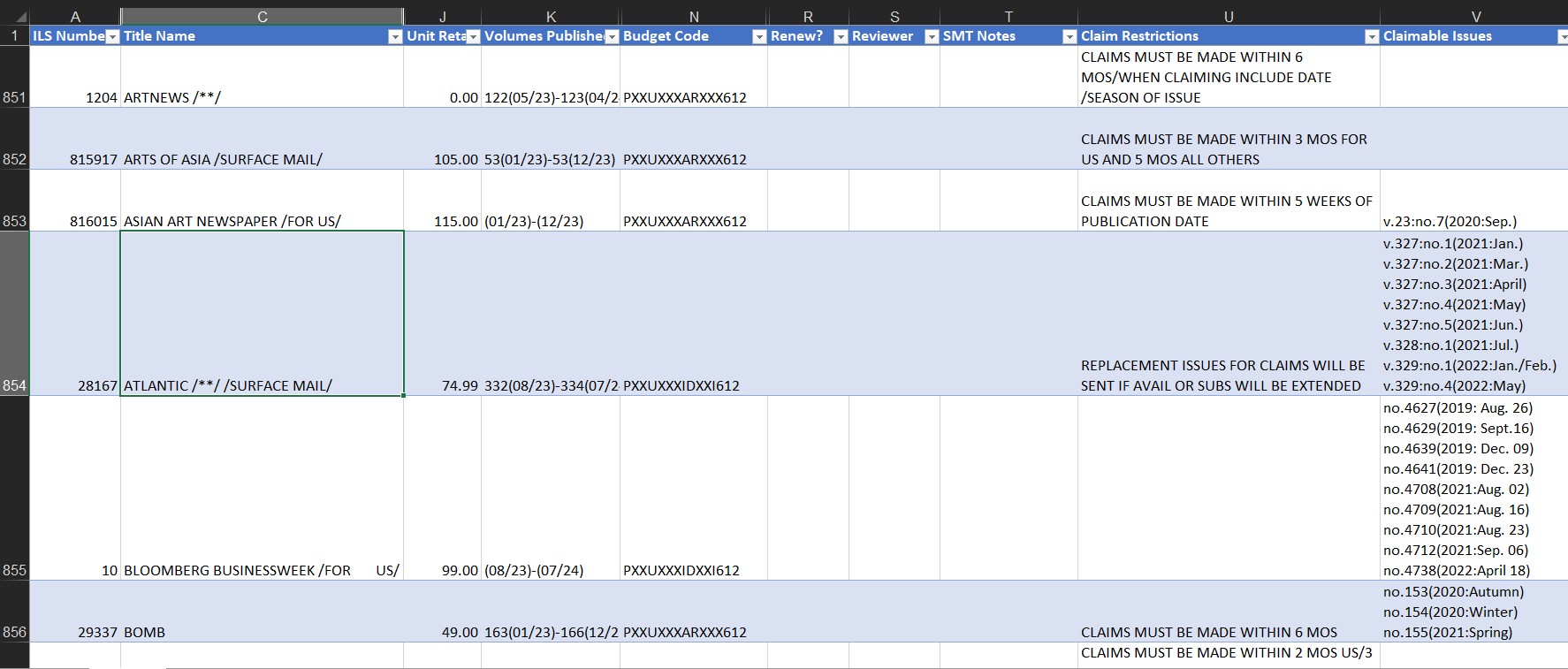









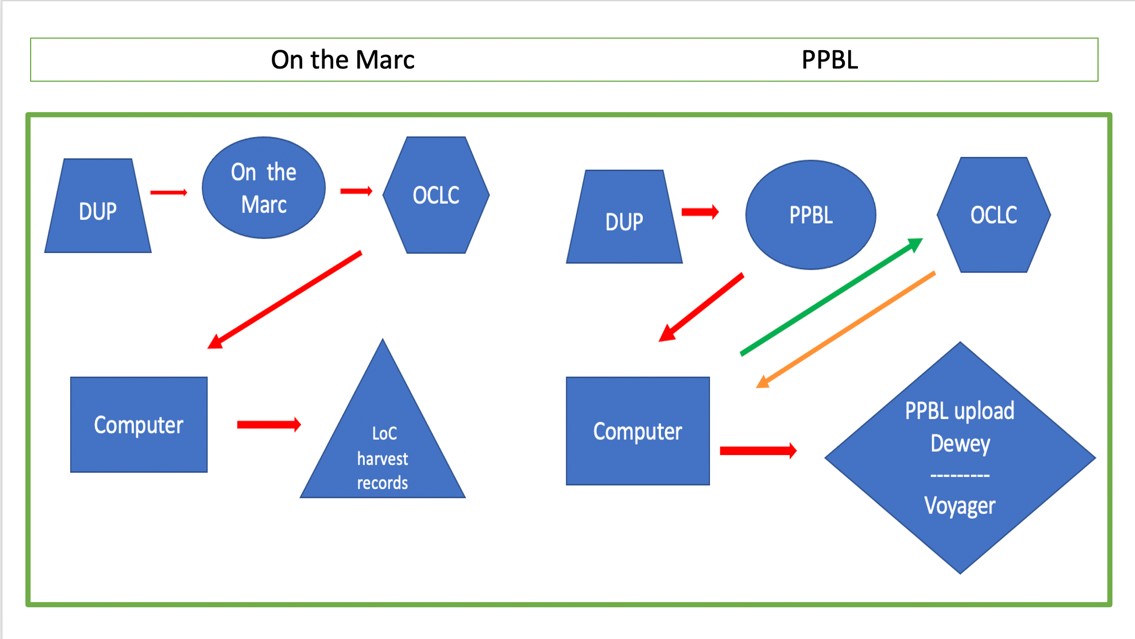




 Corrina has been working at Duke since 1988! She started in the Medical Center, and transferred to the Surgical Private Diagnostic Clinic (later called the Private Diagnostic Clinics) in 1990. Corrina joined Duke Libraries in 1994, spending all of that time working with the Bindery, with several changes, location moves, and position upgrades along the way! One of Corrina’s favorite Duke memories is attending the DUL staff appreciation lunches (especially at the Searle Center), and getting to use work time to attend them. (Way back when, those lunches included humorous plays put on by library staff!)
Corrina has been working at Duke since 1988! She started in the Medical Center, and transferred to the Surgical Private Diagnostic Clinic (later called the Private Diagnostic Clinics) in 1990. Corrina joined Duke Libraries in 1994, spending all of that time working with the Bindery, with several changes, location moves, and position upgrades along the way! One of Corrina’s favorite Duke memories is attending the DUL staff appreciation lunches (especially at the Searle Center), and getting to use work time to attend them. (Way back when, those lunches included humorous plays put on by library staff!)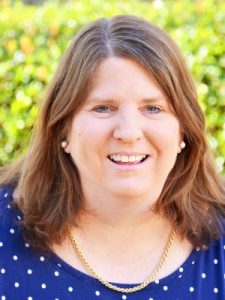 Lesley has worked at Duke since 2001 (all of it in Duke Libraries), first in Receipts Management (starting as Library Assistant and later as Section Head) within the Acquisitions Department, and then in the Cataloging Department (now called Resource Description). Later, she joined Shelf Preparation Section, before becoming part of the BAMM team. One of Lesley’s favorite Duke memories is attending the
Lesley has worked at Duke since 2001 (all of it in Duke Libraries), first in Receipts Management (starting as Library Assistant and later as Section Head) within the Acquisitions Department, and then in the Cataloging Department (now called Resource Description). Later, she joined Shelf Preparation Section, before becoming part of the BAMM team. One of Lesley’s favorite Duke memories is attending the 

